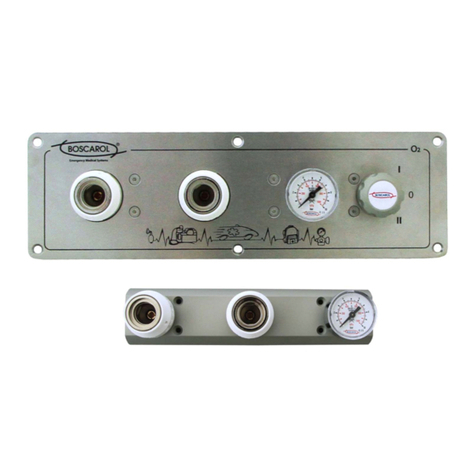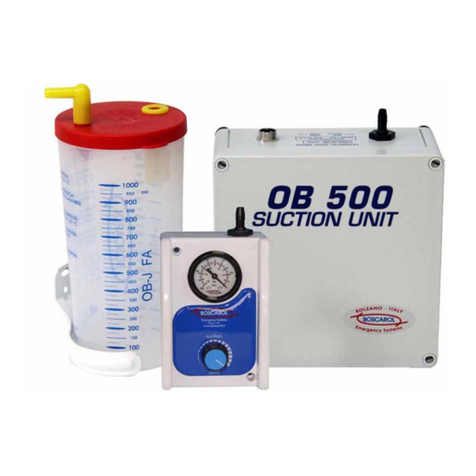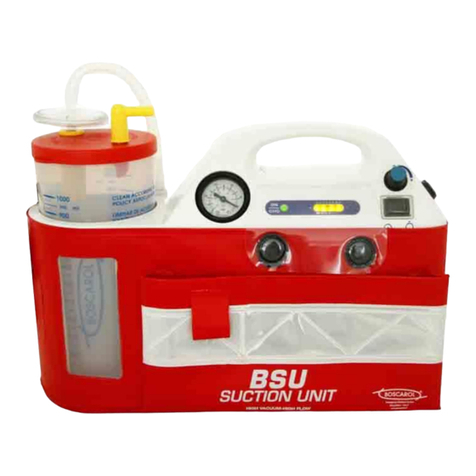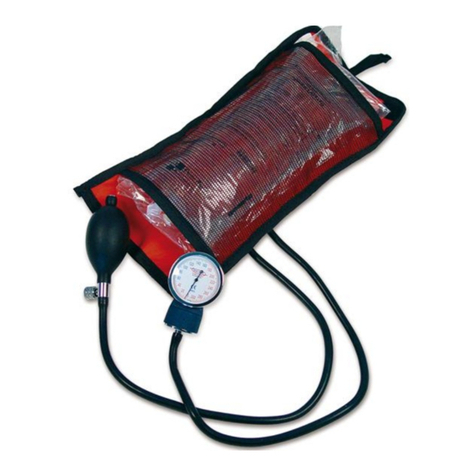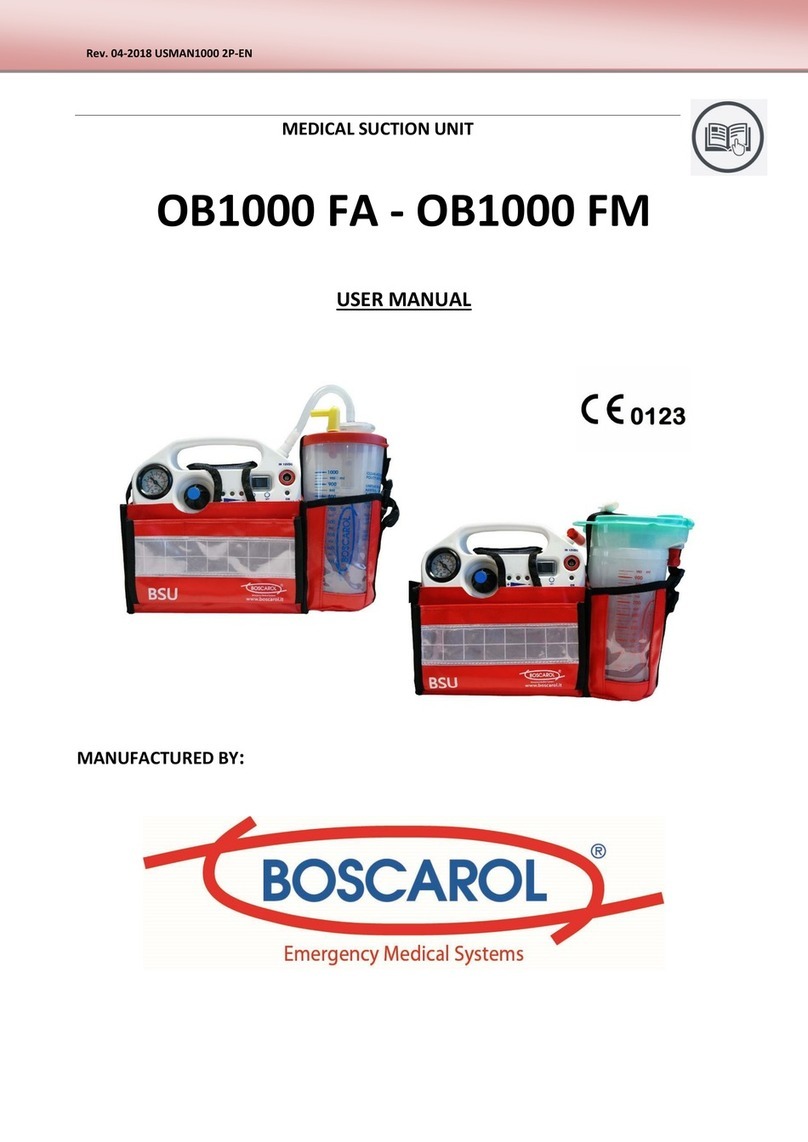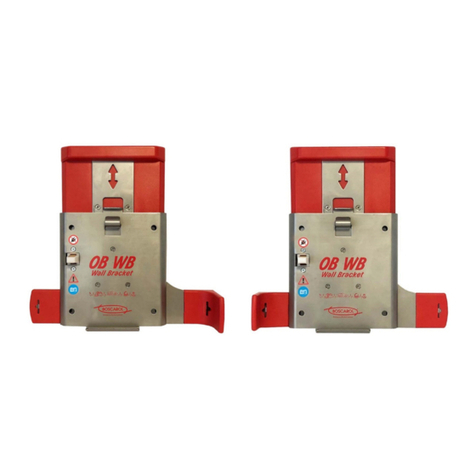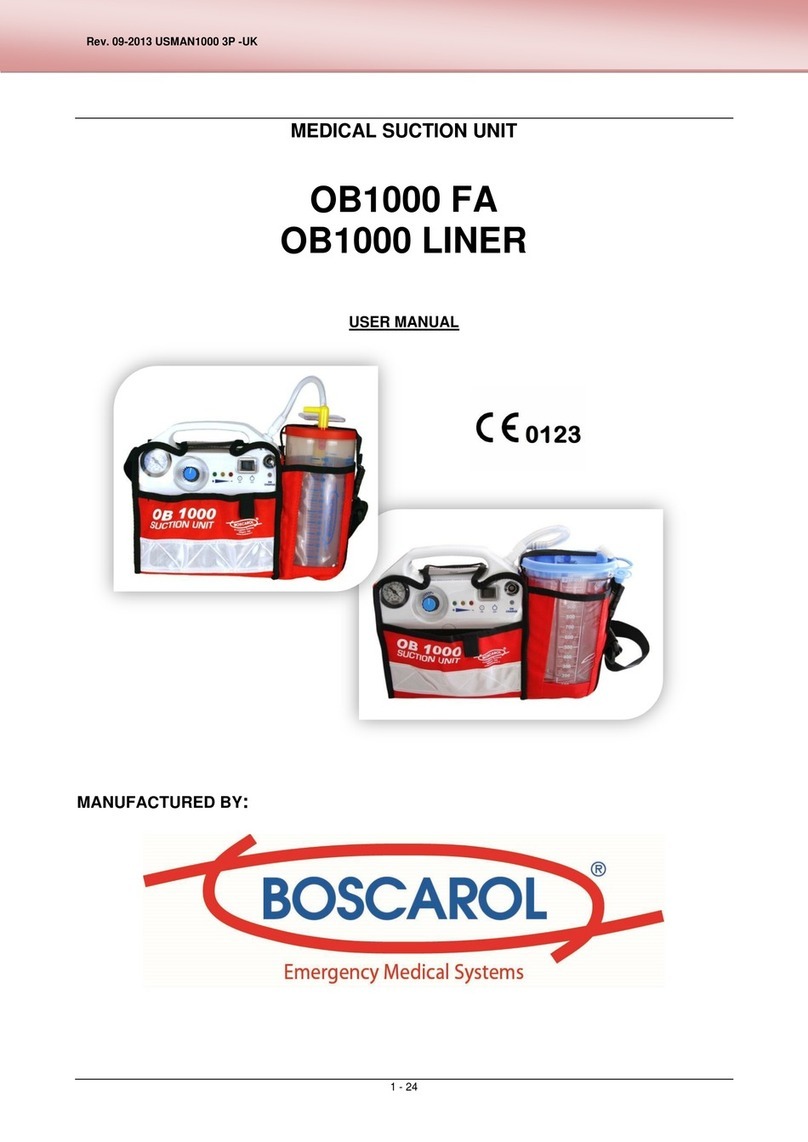
ED01_REV02-2021 IFU OB1000 - OB1000 AVIO_2P-ENG
4- 36
INDEX
INDEX 4
0. MEANING OF SYMBOLS AND PICTOGRAMS ..................................................................................................... 5
0.1. Symbols used in these operating instructions to call the reader's attention.................................................... 5
0.2. Symbols used on the device and accessories.................................................................................................... 5
0.3. Symbols used on the battery and referred to in these operating instructions................................................. 6
1. INTENDED USE ................................................................................................................................................. 7
2. WARNINGS, PRECAUTIONS AND IMPORTANT INFORMATION ......................................................................... 8
3. IMPORTANT INFORMATION TO KNOW BEFORE USE........................................................................................ 9
4. CONTRAINDICATIONS (DO NOT USE FOR).......................................................................................................10
5. SIDE EFFECTS (POSSIBLE DURING SUCTION OPERATIONS) ..............................................................................10
6. MEDICAL SUCTION UNITS OB1000 AND OB1000 AVIO....................................................................................11
6.1. Description of the suction unit........................................................................................................................ 11
6.2. Controls, operation and control panel............................................................................................................ 11
6.3. Indicator lights................................................................................................................................................. 12
6.4. Periodic testing of OB1000 and OB1000 AVIO suction units .......................................................................... 12
6.4.1. Daily periodic testing of OB1000 and OB1000 AVIO suction units ................................................................. 13
6.4.2. Six-monthly/annual periodic testing of OB1000 and OB1000 AVIO suction units.......................................... 13
6.5. Periodic safety maintenance........................................................................................................................... 15
6.6. Safety information for the safety of users, patients and third parties............................................................ 15
7. SECRETION JARS FOR OB1000 AND OB1000 AVIO...........................................................................................15
7.1. Autoclavable secretion collection jar OB-J FA................................................................................................. 15
7.2. Antibacterial filter ........................................................................................................................................... 16
7.3. OB-J LINER: jar of secretions for SERRES® disposable bags............................................................................. 16
7.4. Secrets jar connection..................................................................................................................................... 17
7.5. Sterile disposable Yankauer catheter with suction control system ................................................................ 17
7.6. Silicone suction tube and sterile Fingertip (conical fitting) ............................................................................. 17
7.7. Warnings concerning the re-use of single-use parts....................................................................................... 17
8. REUSE, CLEANING AND DISINFECTION ............................................................................................................18
8.1. Re-use of OB-J FA secretion jar ....................................................................................................................... 18
8.2. Cleaning, disinfection and/or sterilisation of OB-J FA secretion jar and silicone tube.................................... 19
8.3. Jar assembly and connection of the silicone suction tube.............................................................................. 20
8.4. Replacing the antibacterial filter..................................................................................................................... 20
8.5. Cleaning the secretion jar with SERRES® disposable bags .............................................................................. 20
8.6. Disinfection and/or sterilisation of the OB-J secretion jar and silicone tube.................................................. 22
8.7. Assembling the secretion jar with the SERRES® disposable bag..................................................................... 23
8.8. Disposal of contaminated single-use parts ..................................................................................................... 23
8.9. Cleaning and disinfection of the suction unit.................................................................................................. 23
8.10. Cleaning and disinfection plan ........................................................................................................................ 24
9. ACCESSORIES AND OPTIONS FOR OB1000 AND OB1000 AVIO ........................................................................25
10. OB1000 AND OB1000 AVIO SUCTION UNITS INTERNAL BATTERY....................................................................26
11. SPECIAL CONDITIONS OF USE..........................................................................................................................26
12. DEMOLITION OF SUCTION UNIT......................................................................................................................26
13. ACCESSORIES, CONSUMABLES AND SPARE PARTS ..........................................................................................27
14. TECHNICAL SERVICE ........................................................................................................................................27
14.1. Solving common problems.............................................................................................................................. 27
15. TECHNICAL DATA AND COMPLIANCE DATAFOR OB1000 AND OB1000 AVIO ..................................................28
16. INFORMATION CONCERNING ELECTROMAGNETIC COMPATIBILITYEMC (OB1000 - OB1000 AVIO) .................30
16.1. RISKS OF MUTUAL INTERFERENCE WITH OTHER DEVICES .............................................................................. 30
16.2. METHODS TO PREVENT ELECTROMAGNETIC INTERFERENCE ......................................................................... 31
16.3. GUIDELINES AND MANUFACTURER'S DECLARATIONS - ELECTROMAGNETIC EMISSIONS .............................. 31
16.4. GUIDELINES AND MANUFACTURER'S DECLARATIONS - ELECTROMAGNETIC IMMUNITY .............................. 31
17. DECLARATION OF CONFORMITY .....................................................................................................................33
18. WARRANTY.....................................................................................................................................................33






















